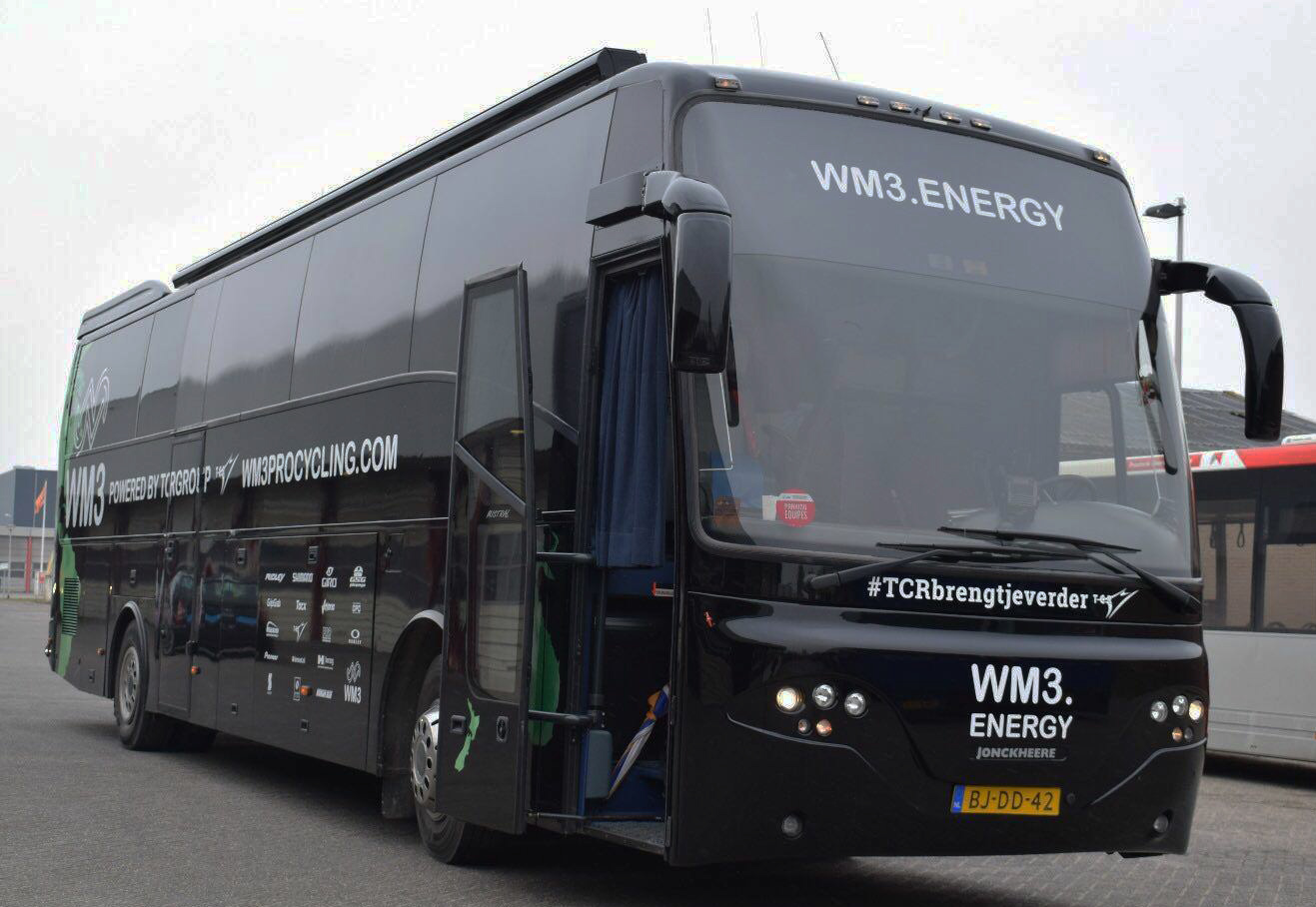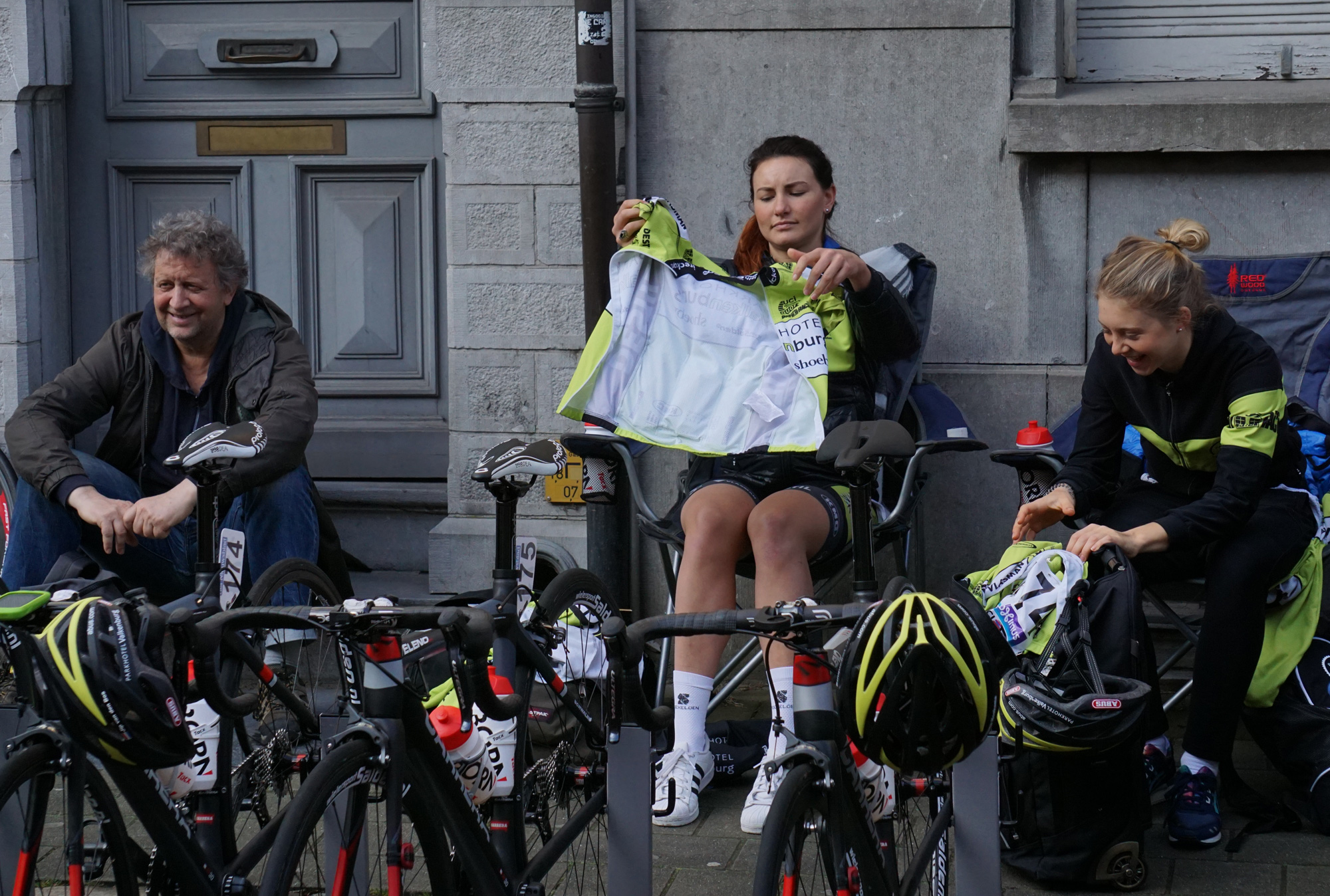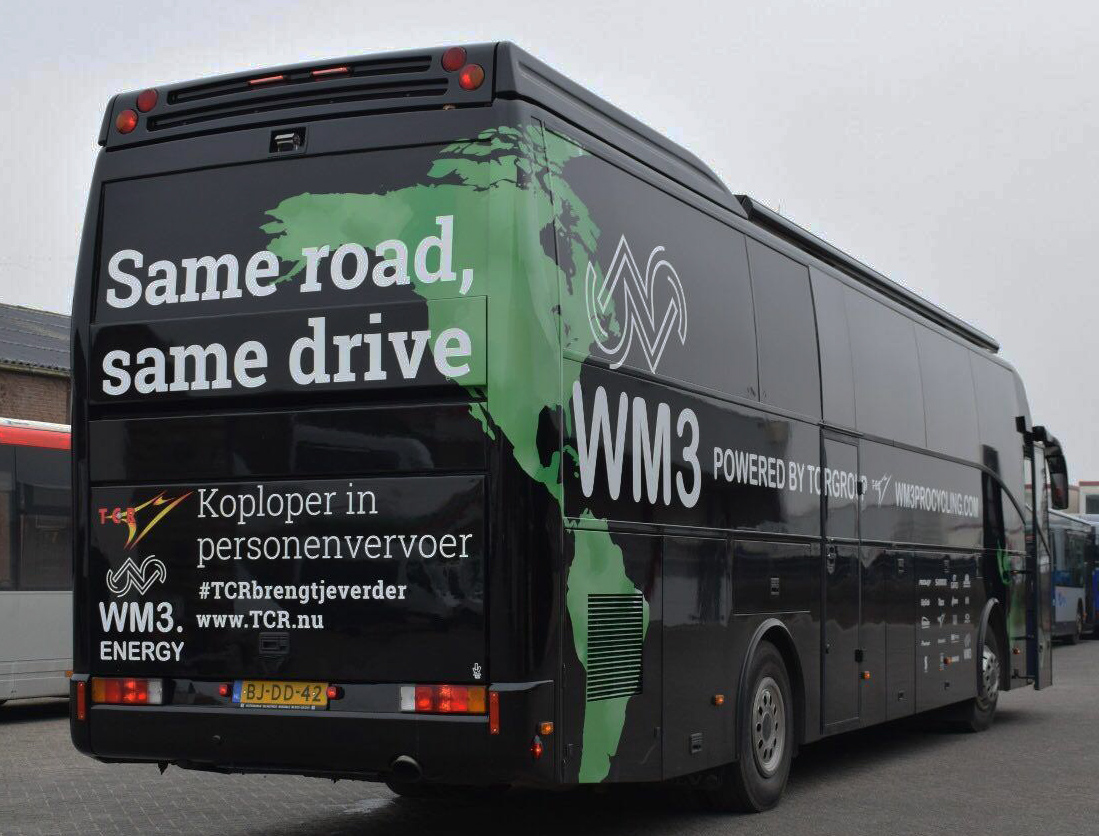Marianne Vos and her colleagues will be travelling in style for 2017, and beyond, after unveiling the WM3 team’s very own version of the Team Sky ‘Death Star’. A jet-black, Jonckheere coach, kitted out with all the luxuries a cycling squad could need to get them to races in comfort and away from the scene of triumph (or disappointment) with optimum recovery facilities.

But … when is a bus more than just a bus? Vos’s team, rising from the ashes of Rabo-Liv’s demise last year, has an almost unprecedented five-year sponsor commitment, taking them through to the end of 2021, and the new livery confirms the arrival of the TCR group, as well.
With the priority in terms of growing women’s cycling surely focusing on providing medium- and longer-term stability in terms of sponsorship, and giving women riders the chance to build and develop meaningful careers in safe(r) and better remunerated working environments, the WM3 chariot could symbolise more than just a mode of transport.
Is the sport is truly heading in the right direction, with facilities and support approaching parity with what could be expected in the men’s World Tour? Or is a lot of money being misdirected when barely a quarter of the UCI-classed women’s “professional” teams are able to live up to that description? Missing salaries, stories dreadful interpersonal abuse and humiliating conditions, and of riders being more or less abandoned to their own devices are sadly not unheard of in women’s cycling.
It’s also not that unusual for riders to have to make-do with changing in the back of a car, or the front seat of a large transit van, if they’re lucky with a towel draped over a window as spectators mill around outside.

It’s also not unusual to see riders going through their pre-race routine sitting freezing on folding chairs out in the street, or having team meetings standing around in a circle as their DS outlines the day’s plan.
The better-funded teams like Boels-Dolmans and UHC have their own battle buses, and if more teams are coming on board with top-end luxuries, then at least there should be a bit of a trickle down effect to smaller, less well-financed squads. If more ‘Death Stars’ appear in the upper echelon, then the older camper vans and transits might just get recycled down the line.

Vos and her team’s manager Eric van den Boom deserve huge credit for pulling together their project, and if it provides a greater impetus for improvements in their sport, so much the better.